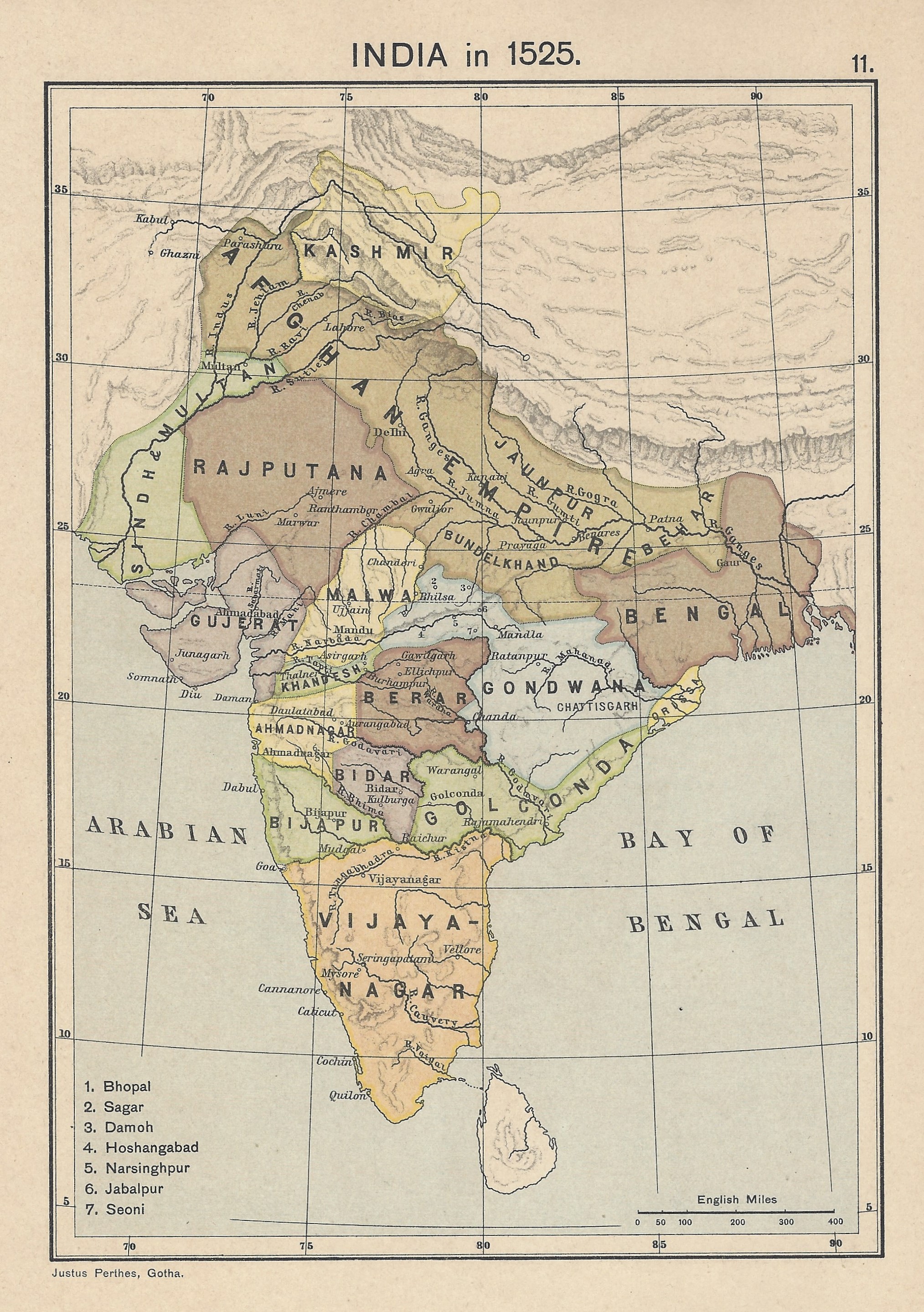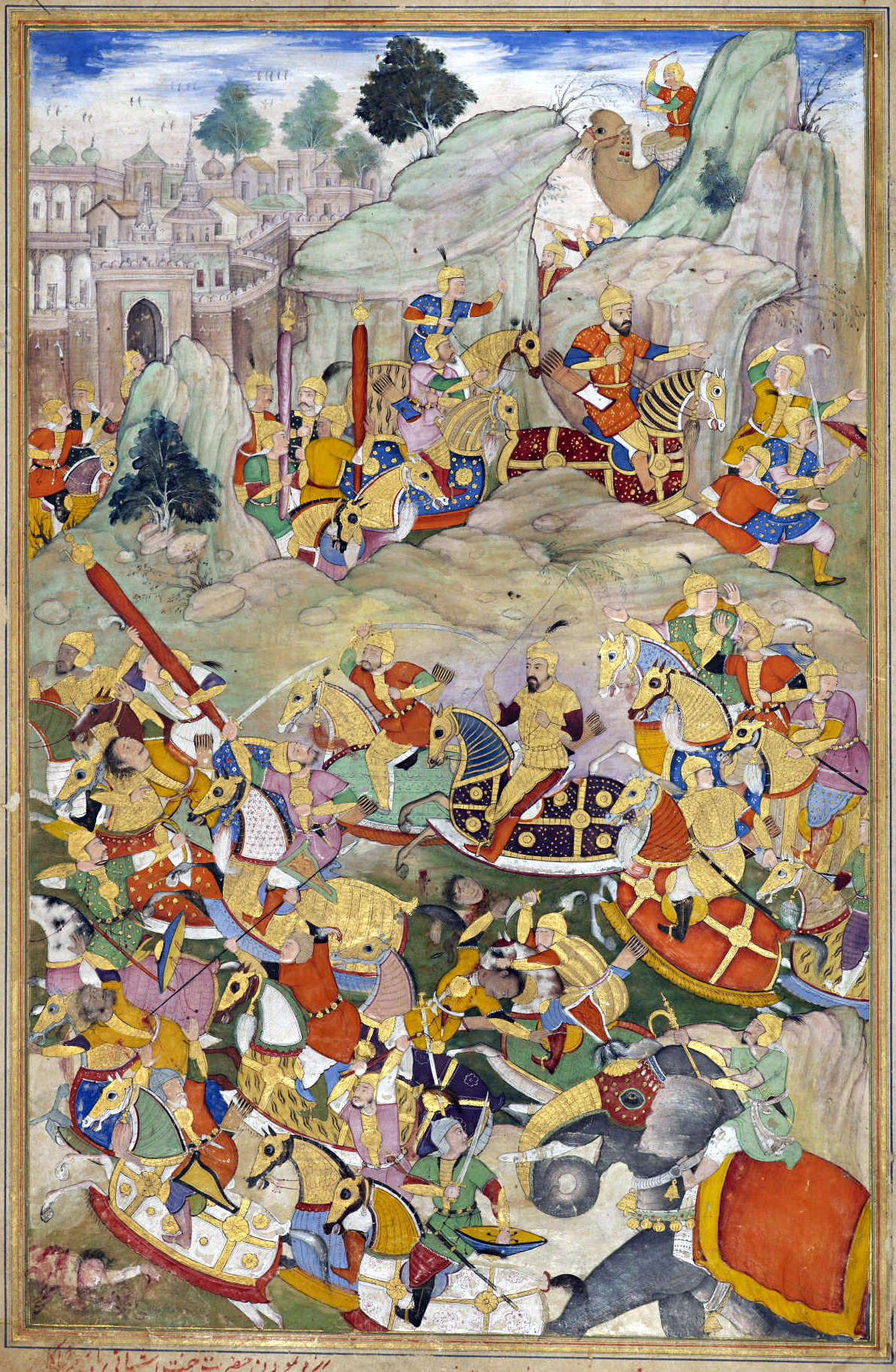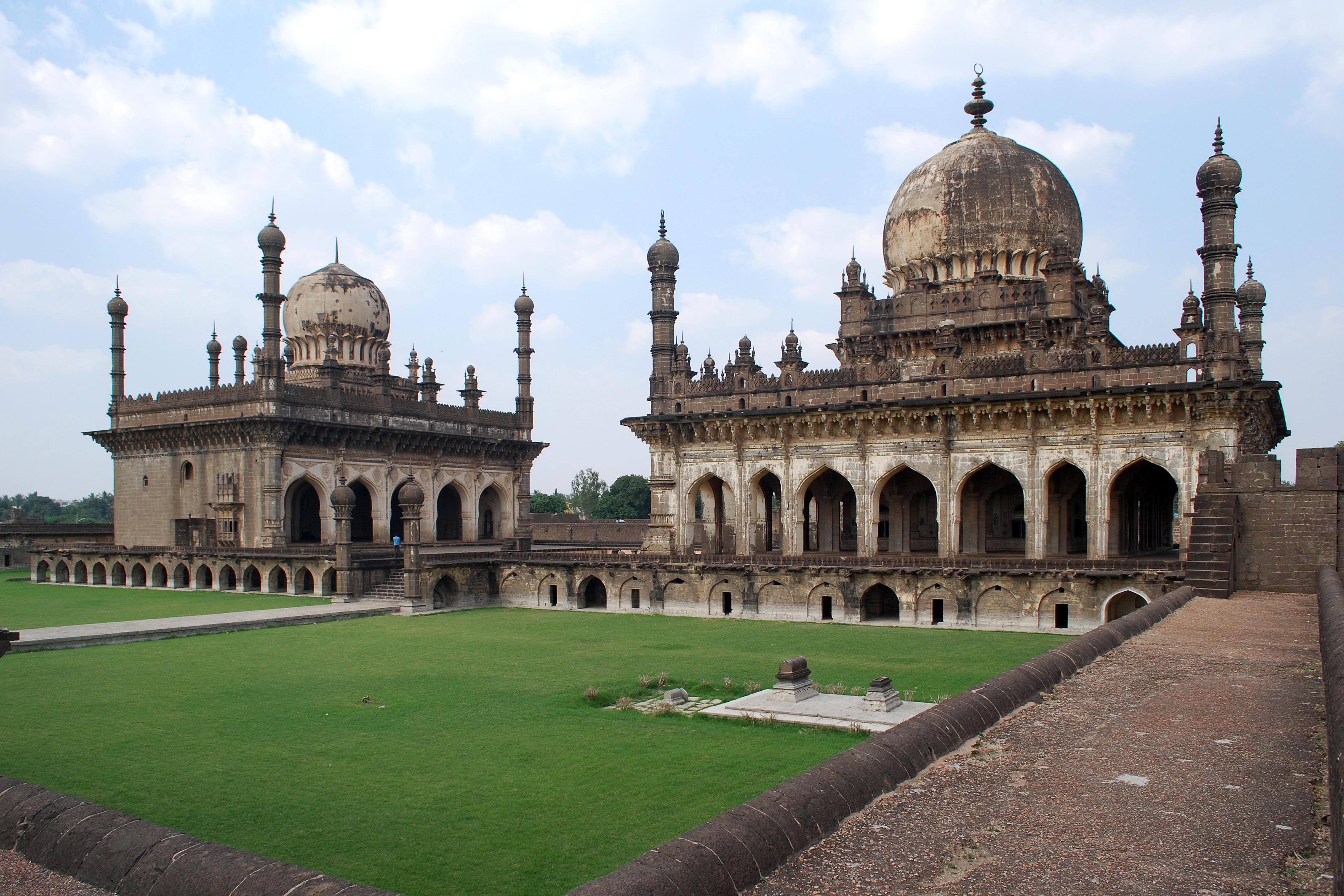|
1556 In India
Events in the year 1556 in India. Events * 14 February – at the age of 13 Akbar becomes the emperor of Mughal India * 7 October – Hemu, the Chief Minister and general of Adil Shah Suri defeats the Mughals in the Battle of Tughlaqabad and captures Delhi. * 5 November – The Mughals defeat Hemu in the Second Battle of Panipat and recapture Delhi. Births * 17 December – Abdul Rahim Khan-I-Khana poet (died 1627) * Ibrahim Adil Shah II, later king of Bijapur Sultanate (died 1627) Deaths * 1 January – Humayun of Mughal India (born 1508 __NOTOC__ Year 1508 ( MDVIII) was a leap year starting on Saturday of the Julian calendar. Events January–March * January 24 – Maximilian, King of the Romans, requests permission to march to Rome through Venetian territory, ...) See also References 1556 by country Years of the 16th century in India 1556 in Asia 1550s in India {{India-year-stub ... [...More Info...] [...Related Items...] OR: [Wikipedia] [Google] [Baidu] |
Akbar
Akbar (Jalal-ud-din Muhammad Akbar, – ), popularly known as Akbar the Great, was the third Mughal emperor, who reigned from 1556 to 1605. Akbar succeeded his father, Humayun, under a regent, Bairam Khan, who helped the young emperor expand and consolidate Mughal domains in the Indian subcontinent. He is generally considered one of the greatest emperors in Indian history and led a successful campaign to unify the various kingdoms of '' Hindūstān'' or India proper. Quote: "Akbar, The greatest Mughal emperor of India." Akbar gradually enlarged the Mughal Empire to include much of the Indian subcontinent through Mughal military, political, cultural, and economic dominance. To unify the vast Mughal state, Akbar established a centralised system of administration and adopted a policy of conciliating conquered rulers through marriage and diplomacy. To preserve peace and order in a religiously and culturally diverse empire, he adopted policies that won him the support of his no ... [...More Info...] [...Related Items...] OR: [Wikipedia] [Google] [Baidu] |
Bijapur Sultanate
The Sultanate of Bijapur was an early modern kingdom in the western Deccan and South India, ruled by the Muslim Adil Shahi (or Adilshahi) dynasty. Bijapur had been a '' taraf'' (province) of the Bahmani Kingdom prior to its independence in 1490 and before the kingdom's political decline in the last quarter of the 15th century. It was one of the Deccan sultanates, the collective name of the kingdom's five successor states. The Sultanate of Bijapur was one of the most powerful states on the Indian Subcontinent at its peak, second to the Mughal Empire which conquered it in 1686 under Aurangzeb. After emigrating to the Bahmani Sultanate, Yusuf Adil Shah rose through the ranks to be appointed governor of the province of Bijapur. In 1490, he created a ''de facto'' independent Bijapur state which became formally independent with the Bahmani collapse in 1518. The Bijapur Sultanate's borders changed considerably throughout its history. Its northern boundary remained relatively stabl ... [...More Info...] [...Related Items...] OR: [Wikipedia] [Google] [Baidu] |
Years Of The 16th Century In India
A year is a unit of time based on how long it takes the Earth to orbit the Sun. In scientific use, the tropical year (approximately 365 solar days, 5 hours, 48 minutes, 45 seconds) and the sidereal year (about 20 minutes longer) are more exact. The modern calendar year, as reckoned according to the Gregorian calendar, approximates the tropical year by using a system of leap years. The term 'year' is also used to indicate other periods of roughly similar duration, such as the lunar year (a roughly 354-day cycle of twelve of the Moon's phasessee lunar calendar), as well as periods loosely associated with the calendar or astronomical year, such as the seasonal year, the fiscal year, the academic year, etc. Due to the Earth's axial tilt, the course of a year sees the passing of the seasons, marked by changes in weather, the hours of daylight, and, consequently, vegetation and soil fertility. In temperate and subpolar regions around the planet, four seasons are generally reco ... [...More Info...] [...Related Items...] OR: [Wikipedia] [Google] [Baidu] |
1556 By Country
Year 1556 ( MDLVI) was a leap year starting on Wednesday of the Julian calendar. Events January–March * January 4 – In Japan, Saitō Yoshitatsu, the eldest son of Saitō Dōsan, arranges the murders of his two younger brothers, Magoshiro and Kiheiji, and forces his father to flee from the Sagiyama Castle. * January 16 – Charles V abdicates the thrones of the Spanish Empire (including his colonies in the New World) in favor of his son, Philip II, and retires to a monastery. * January 23 – The Shaanxi earthquake, the deadliest earthquake in history, occurs with its epicenter in Shaanxi province, China; 830,000 people may have been killed. * January 24 – In India, at the Sher Mandal in Delhi, the Mughal Emperor Humayun trips while descending the stairs from his library and strikes the side of his head against a stone step, sustaining a fatal injury. He never regains consciousness and dies seven days later. * February 5 – Truce of Vauce ... [...More Info...] [...Related Items...] OR: [Wikipedia] [Google] [Baidu] |
1556 In India
Events in the year 1556 in India. Events * 14 February – at the age of 13 Akbar becomes the emperor of Mughal India * 7 October – Hemu, the Chief Minister and general of Adil Shah Suri defeats the Mughals in the Battle of Tughlaqabad and captures Delhi. * 5 November – The Mughals defeat Hemu in the Second Battle of Panipat and recapture Delhi. Births * 17 December – Abdul Rahim Khan-I-Khana poet (died 1627) * Ibrahim Adil Shah II, later king of Bijapur Sultanate (died 1627) Deaths * 1 January – Humayun of Mughal India (born 1508 __NOTOC__ Year 1508 ( MDVIII) was a leap year starting on Saturday of the Julian calendar. Events January–March * January 24 – Maximilian, King of the Romans, requests permission to march to Rome through Venetian territory, ...) See also References 1556 by country Years of the 16th century in India 1556 in Asia 1550s in India {{India-year-stub ... [...More Info...] [...Related Items...] OR: [Wikipedia] [Google] [Baidu] |
1508 In India
Events from the year 1508 in India. Events * The Christian-Islamic power struggle in Europe and the Middle East spills over into the Indian Ocean as Battle of Chaul during the Portuguese-Mamluk War Births * 7 March – Humayun (Nasir ud-din Muhammad Humayun), later Mughal Empire, Mughal emperor (died 1556 in India#Deaths, 1556) Deaths * March, Lourenço de Almeida Portuguese explorer and military commander dies in the Battle of Chaul (born c 1480) * Mayimama Marakkar, Indian ambassador of the Zamorin ruler of Kozhikode, Calicut dies at the Battle of Chaul See also * Timeline of Indian history References 1508 in India, 1508 in Asia Years of the 16th century in India 1500s in India 1508 by country {{India-year-stub ... [...More Info...] [...Related Items...] OR: [Wikipedia] [Google] [Baidu] |
Mughal India
The Mughal Empire was an early modern empire in South Asia. At its peak, the empire stretched from the outer fringes of the Indus River Basin in the west, northern Afghanistan in the northwest, and Kashmir in the north, to the highlands of present-day Assam and Bangladesh in the east, and the uplands of the Deccan Plateau in South India.. Quote: "The realm so defined and governed was a vast territory of some , ranging from the frontier with Central Asia in northern Afghanistan to the northern uplands of the Deccan plateau, and from the Indus basin on the west to the Assamese highlands in the east." The Mughal Empire is conventionally said to have been founded in 1526 by Babur, a chieftain from what is today Uzbekistan, who employed aid from the neighboring Safavid and Ottoman Empires Quote: "Babur then adroitly gave the Ottomans his promise not to attack them in return for their military aid, which he received in the form of the newest of battlefield inventions, the matchlock ... [...More Info...] [...Related Items...] OR: [Wikipedia] [Google] [Baidu] |
Humayun
Nasir al-Din Muhammad (6 March 1508 – 27 January 1556), commonly known by his regnal name Humayun (), was the second Mughal emperor, who ruled over territory in what is now Eastern Afghanistan, Bangladesh, Northern India, and Pakistan from 1530 to 1540 and again from 1555 to his death in 1556. At the time of his death, the Mughal Empire spanned almost one million square kilometers. On 26 December 1530, Humayun succeeded his father Babur to the throne of Delhi as ruler of the Mughal territories in the Indian subcontinent. Humayun was an inexperienced ruler when he came to power at the age of 22. His half-brother Kamran Mirza inherited Kabul and Kandahar, the northernmost parts of their father's empire; the two half-brothers became bitter rivals. Early in his reign, Humayun lost his entire empire to Sher Shah Suri but regained it 15 years later with Safavid aid. His return from Persia was accompanied by a large retinue of Persian noblemen, signaling an important change in M ... [...More Info...] [...Related Items...] OR: [Wikipedia] [Google] [Baidu] |
Ibrahim Adil Shah II
Ibrahim Adil Shah II (1570 – 12 September 1627) was Sultan of the Sultanate of Bijapur and a member of the Adil Shahi dynasty. Under his reign the sultanate had its greatest period as he extended its frontier as far south as Mysore. He was a skilful administrator, artist, poet and a generous patron of the arts. He reverted to the Sunni orthodoxy of Islam, but remained tolerant of other religions, including Christianity. However, during his reign high-ranking Shiite immigrants became unwelcome and in 1590, he ordered the confinement of criers who read the khutba in the Shia form. The Adil Shahis under his rule left a tradition of cosmopolitan culture and artistic patronage whose architectural remains are to be seen in the capital city of Bijapur. Biography After the death of Ali Adil Shah I in 1580, the kingdom's nobles appointed Imran Ibrahim, son of Imran Sayzada Tahmash Adil Shah and nephew of Ali Adil Shah I, as sultan. At this time, Ibrahim Adil Shah II was a ... [...More Info...] [...Related Items...] OR: [Wikipedia] [Google] [Baidu] |
Mughal Empire
The Mughal Empire was an Early modern period, early modern empire in South Asia. At its peak, the empire stretched from the outer fringes of the Indus River Basin in the west, northern Afghanistan in the northwest, and Kashmir in the north, to the highlands of present-day Assam and Bangladesh in the east, and the uplands of the Deccan Plateau in South India.. Quote: "The realm so defined and governed was a vast territory of some , ranging from the frontier with Central Asia in northern Afghanistan to the northern uplands of the Deccan plateau, and from the Indus basin on the west to the Assamese highlands in the east." The Mughal Empire is conventionally said to have been founded in 1526 by Babur, a Tribal chief, chieftain from what is today Uzbekistan, who employed aid from the neighboring Safavid Iran, Safavid and Ottoman Empires Quote: "Babur then adroitly gave the Ottomans his promise not to attack them in return for their military aid, which he received in the form of the ... [...More Info...] [...Related Items...] OR: [Wikipedia] [Google] [Baidu] |
1627 In India
This is a list of events in India in year 1627. Events * Mohammed Adil Shah becomes Ruler of Bijapur, Karnataka following the death of Ibrahim Adil Shah II. * Gol Gumbaz, Karnataka begins. Deaths * Abdul Rahim Khan-I-Khana poet (born 1556) * Ibrahim Adil Shah II, later king of Bijapur Sultanate (born 1556) See also * Timeline of Indian history References India India, officially the Republic of India, is a country in South Asia. It is the List of countries and dependencies by area, seventh-largest country by area; the List of countries by population (United Nations), most populous country since ... Years of the 17th century in India {{India-year-stub ... [...More Info...] [...Related Items...] OR: [Wikipedia] [Google] [Baidu] |
Abdul Rahim Khan-I-Khana
Khanzada Mirza Khan Abdul Rahim (17 December 1556 – 1 October 1627), popularly known as simply Rahim and titled ''Khan-i-Khanan'', was a poet who lived in India during the rule of Mughal emperor Akbar, who was Rahim's mentor. He was one of the nine important ministers (dewan) in Akbar's court, known as the Navaratnas. Rahim was known for his Hindustani dohe (couplets) and his books on astrology. Biography Abdul Rahim was born in Delhi,29. Kha´n Kha´na´n Mi´rza´ 'Abdurrahi´m, son of Bairám Khán – Biography of Abul Fazl, Vol I, English Translation. 1873. the son of |








